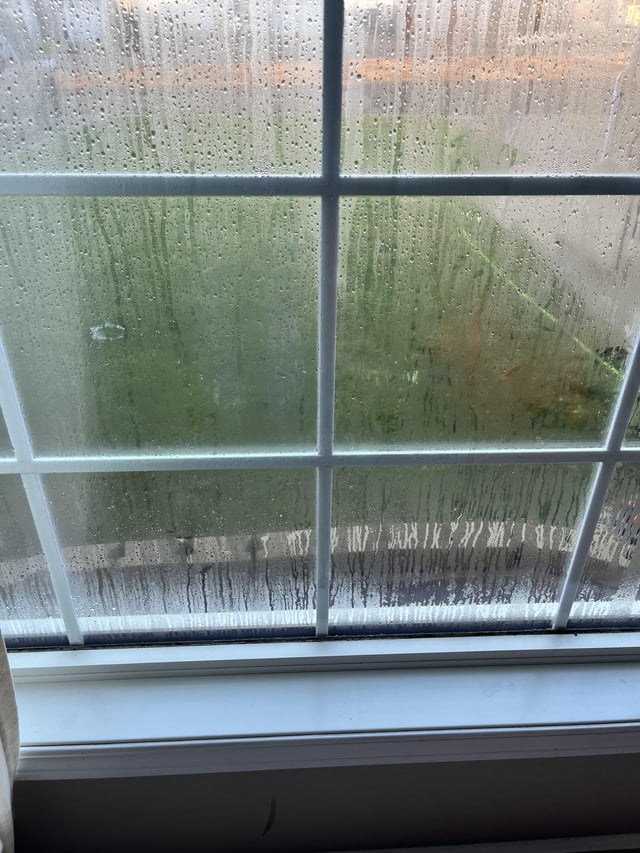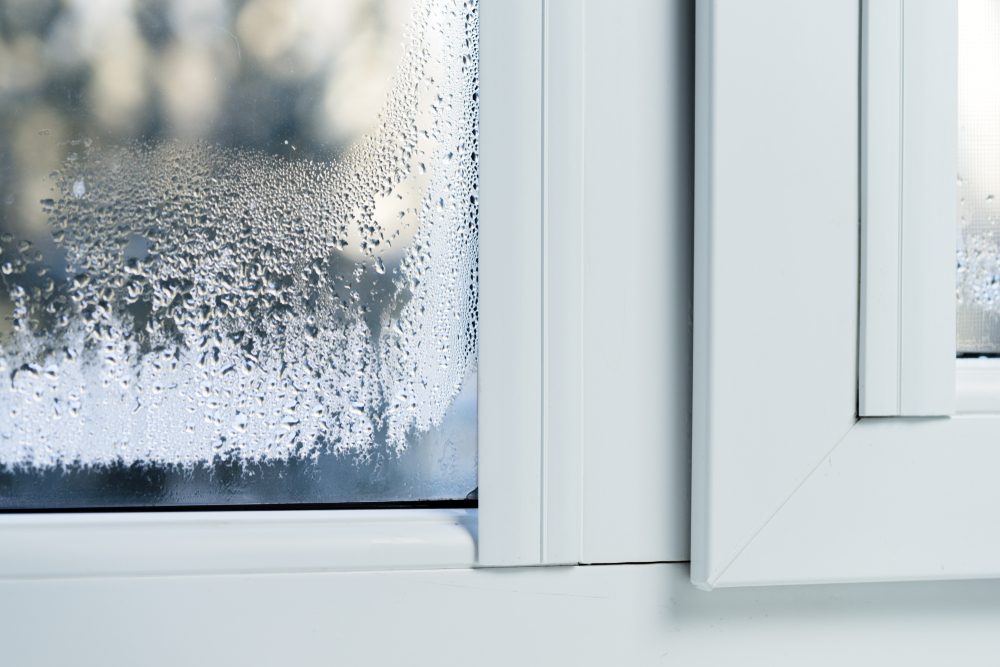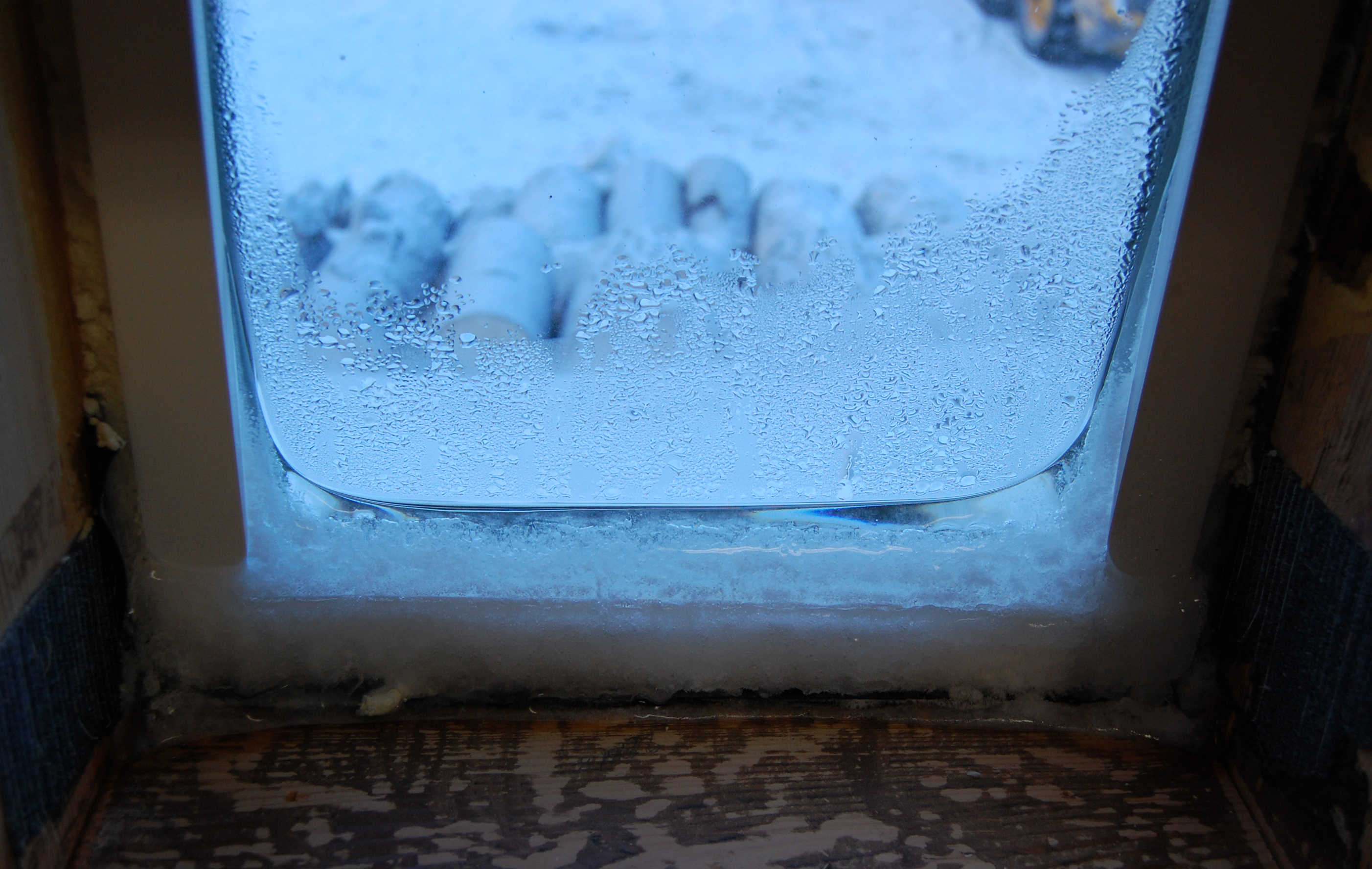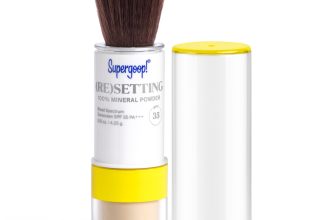Moisture Buildup on Inside of Windows

Moisture buildup on inside of windows can be a sign of high indoor humidity levels. This condensation occurs when warm, moist air comes into contact with the cooler glass surface.
Excess moisture can lead to mold growth and damage to window frames. Proper ventilation and use of dehumidifiers can help prevent this issue. Addressing the root cause of high humidity levels is essential to maintain a healthy indoor environment and prevent long-term damage to your windows.
Regularly checking and addressing moisture buildup can help preserve the integrity of your windows and improve indoor air quality.

Causes Of Moisture Buildup
Moisture buildup on the inside of windows can be a common issue in many homes, leading to potential damage and concerns about indoor air quality. Understanding the causes of this buildup is crucial in effectively addressing the problem.
Temperature Differences
Significant temperature variations between the inside and outside of your home can lead to condensation forming on windows.
High Indoor Humidity
Excessive moisture levels indoors, often due to activities like cooking, showering, or drying clothes, can contribute to condensation on windows.
Poor Ventilation
Inadequate ventilation prevents moist air from escaping, allowing it to accumulate and cause condensation on windows.

Impacts Of Excess Moisture
Excess moisture buildup on the inside of windows can lead to several detrimental impacts. From damage to window frames to the growth of mold and mildew, the effects of excessive moisture can be far-reaching and troublesome.
Damage To Window Frames
Excessive moisture can cause window frames to deteriorate over time. The constant exposure to moisture can lead to warping, rotting, and discoloration of the frames, compromising their structural integrity and aesthetic appeal.
Mold And Mildew Growth
The presence of excess moisture creates an ideal environment for the growth of mold and mildew. These unsightly and potentially harmful fungi can proliferate on the window sills and frames, posing health risks and detracting from the overall cleanliness of the indoor space.
Reduced Indoor Air Quality
Excessive moisture can contribute to reduced indoor air quality as it fosters the growth of mold and mildew, which can release spores and allergens into the air. Additionally, high humidity levels can create a stuffy and uncomfortable atmosphere, negatively impacting the overall comfort of the indoor environment.
Simple Daily Practices
When it comes to preventing moisture buildup on the inside of windows, incorporating simple daily practices can make a significant difference. By implementing these habits, you can maintain a healthier indoor environment while preserving the condition of your windows.
Use Of Exhaust Fans
Utilize exhaust fans in areas prone to moisture, such as the kitchen and bathroom. When cooking or showering, turn on the exhaust fan to expel excess moisture from these spaces, effectively reducing the likelihood of condensation on windows.
Regular Air Circulation
Promote regular air circulation within your home by opening windows and doors when weather permits. This allows fresh air to enter and circulate, preventing stagnant air and reducing humidity levels, ultimately minimizing moisture accumulation on window surfaces.
Proper Use Of Dehumidifiers
Use dehumidifiers strategically in areas with high humidity, such as basements or laundry rooms. These appliances are designed to extract excess moisture from the air, aiding in the prevention of window condensation by maintaining optimal humidity levels.
Window Technology And Improvements
Improved window technology now effectively prevents moisture buildup on the inside of windows. Innovative designs and materials address condensation issues, promoting healthier indoor environments. With advanced solutions, homeowners can enjoy clearer views and better insulation without worrying about moisture-related problems.
Moisture buildup on the inside of windows is a common problem that many homeowners face. This occurs when the warm, moist air inside the house comes into contact with the cold surface of the window, causing condensation to form. This can lead to a number of issues, including mold growth, damage to the window frames, and reduced visibility. However, there are several window technology and improvements that can help to prevent moisture buildup and keep your windows looking and functioning their best.
Double Glazing Benefits
One of the most effective ways to prevent moisture buildup on the inside of windows is to invest in double glazing. Double glazing involves the use of two panes of glass separated by a vacuum or gas-filled space. This provides an extra layer of insulation, which helps to reduce heat loss and prevent condensation from forming on the inside of the window. Double glazing can also help to reduce noise pollution and improve the energy efficiency of your home, making it a worthwhile investment in the long run.
Thermal Curtains
Another way to prevent moisture buildup on the inside of windows is to use thermal curtains. These curtains are made from insulating materials, which help to trap heat inside the room and prevent it from escaping through the windows. This can help to keep your home warmer in the winter and cooler in the summer, reducing the risk of condensation forming on the inside of the window. Thermal curtains are available in a variety of styles and colors, so you can choose the ones that best suit your décor.
Weather Stripping
Weather stripping is another effective way to prevent moisture buildup on the inside of windows. This involves sealing any gaps or cracks around the window frame, which can allow cold air to enter and warm air to escape. By sealing these gaps, you can help to keep your home more energy efficient and prevent condensation from forming on the inside of the window. Weather stripping is easy to install and can be done using a variety of materials, including foam, rubber, and vinyl. In conclusion, there are several window technology and improvements that can help to prevent moisture buildup on the inside of windows. Double glazing, thermal curtains, and weather stripping are all effective ways to keep your windows looking and functioning their best. By investing in these improvements, you can enjoy a more comfortable and energy-efficient home while reducing the risk of mold growth and other issues caused by moisture buildup.
Professional Solutions
Combat moisture buildup on your windows with professional solutions. Prevent condensation and mold formation for a healthier indoor environment.
Moisture buildup on the inside of windows is a common problem that can lead to a range of issues, from mold growth and water damage to decreased energy efficiency. While there are some DIY solutions that can provide temporary relief, such as using a dehumidifier or improving ventilation, professional solutions are often necessary for long-term results. In this article, we will explore some of the professional solutions available for addressing moisture buildup on the inside of windows.
Hvac System Assessment
One of the first steps in addressing moisture buildup on the inside of windows is to assess your HVAC (heating, ventilation, and air conditioning) system. A professional HVAC technician can inspect your system to determine if there are any issues that may be contributing to the problem, such as inadequate ventilation or improper insulation. They may also recommend upgrades or repairs to your HVAC system, such as installing a whole-house dehumidifier or improving air circulation.
Window Replacement Options
If your windows are old or damaged, they may be contributing to moisture buildup on the inside of your home. In some cases, replacing your windows may be the best solution. There are several window replacement options available, including:
- Vinyl windows: These are affordable and low-maintenance, making them a popular choice for homeowners.
- Wood windows: These are energy-efficient and offer a classic look, but require more maintenance than vinyl windows.
- Fiberglass windows: These are durable and energy-efficient, but can be more expensive than other options.
A professional window installer can help you choose the best replacement windows for your home and ensure proper installation to prevent future moisture buildup.
Expert Installation Techniques
Whether you opt for window replacement or HVAC upgrades, it’s important to ensure that all work is performed by a professional with expertise in moisture control. Expert installation techniques can help prevent future moisture buildup and ensure that your home is safe and comfortable. Some key installation techniques to look for include:
- Proper sealing: All windows and doors should be properly sealed to prevent air leaks and moisture infiltration.
- Vapor barriers: A vapor barrier can be installed to prevent moisture from entering the walls and ceiling of your home.
- Air circulation: Proper air circulation is crucial for preventing moisture buildup. A professional installer can ensure that your HVAC system is properly ventilated and that air is circulating effectively throughout your home.
In conclusion, moisture buildup on the inside of windows is a common problem that can have serious consequences if left untreated. By working with a professional HVAC technician and/or window installer, you can find the best solutions for your home and ensure that your indoor environment is safe, healthy, and comfortable for years to come.
Diy Anti-condensation Measures
Condensation on the inside of windows can be a persistent issue, causing not only discomfort but also potential damage to your home. Fortunately, there are several DIY anti-condensation measures that can help alleviate this problem. By implementing these simple solutions, you can effectively reduce moisture buildup and maintain a more comfortable indoor environment.
Homemade Moisture Absorbers
Homemade moisture absorbers can be an effective and budget-friendly solution for combating condensation on windows. A simple yet efficient option involves placing bowls of uncooked rice in the vicinity of the affected windows. The rice will naturally absorb excess moisture from the air, helping to minimize condensation. Another alternative is using charcoal briquettes, which have natural absorbent properties and can be placed in breathable fabric bags to prevent mess.
Window Insulation Kits
Window insulation kits are an excellent way to reduce condensation by creating a barrier between the warm indoor air and the cold window surface. These kits typically consist of clear plastic film that can be easily applied to the interior of the window using double-sided tape. Once installed, the film helps to minimize heat transfer and reduce the likelihood of condensation forming on the glass surface.
Silica Gel Uses
Silica gel is a highly effective desiccant that can be utilized to combat moisture buildup on windows. By placing silica gel packets near the affected windows, you can help absorb excess humidity and prevent condensation. Additionally, incorporating silica gel desiccant canisters within the immediate area can further enhance moisture absorption and contribute to a drier environment.
Monitoring Humidity Levels
Using Hygrometers
Hygrometers are essential tools for accurately measuring indoor humidity levels. By placing a hygrometer in various rooms throughout your home, you can gain insights into the moisture content in the air. This data allows you to make informed decisions about controlling humidity and preventing moisture buildup on the inside of windows.
Smart Home Integrations
With the advancement of smart home technology, integrating hygrometers with smart home systems has become increasingly popular. This allows homeowners to remotely monitor and adjust humidity levels, ensuring a comfortable and moisture-free environment. Smart home integrations offer convenience and peace of mind, as you can keep an eye on indoor humidity levels even when you’re away from home.
Ideal Humidity Ranges
Maintaining ideal humidity levels is crucial for preventing moisture buildup on windows. The recommended indoor humidity range is between 30% and 50%. This range helps to minimize condensation on windows and reduce the risk of mold growth. By regularly monitoring and adjusting humidity levels within this range, you can effectively combat moisture buildup and keep your home’s interior environment healthy and comfortable.
Long-term Prevention Strategies
Preventing moisture buildup on the inside of windows requires long-term strategies like improving ventilation and using dehumidifiers. Regularly wiping down windows and fixing any leaks can also help maintain a dry environment indoors. Taking proactive steps is key to avoiding condensation issues in the future.
Regular care and attention can significantly minimize moisture buildup on windows. By implementing a series of simple yet effective strategies, you can maintain a healthy indoor environment and prevent potential damage caused by excess moisture.
Routine Maintenance Schedule
- Check and clean window seals twice a year.
- Inspect and repair any cracks or gaps in window frames promptly.
- Wipe down windows weekly to remove excess condensation.
Ventilation System Upgrades
- Install exhaust fans in kitchen and bathrooms to reduce humidity levels.
- Consider a whole-house ventilation system for improved air circulation.
- Open windows regularly to promote airflow and reduce moisture buildup.
Educating Household Members
Teach family members about the importance of proper ventilation and moisture control.
Encourage them to use exhaust fans during cooking and showering.
Remind everyone to report any signs of window condensation promptly.

Frequently Asked Questions
How Do You Fix Moisture In The Inside Of A Window?
To fix moisture inside a window, ensure proper ventilation, seal any leaks, and use a dehumidifier.
Should I Be Worried About Condensation On The Inside Of My Windows?
Condensation on windows is normal but excessive moisture can indicate a problem with humidity levels.
How To Get Rid Of Condensation Inside Window Panes?
To remove condensation inside window panes, use a dehumidifier to reduce indoor humidity. Increase ventilation by opening windows and using exhaust fans. Consider replacing the windows with double or triple-pane insulated glass. Use moisture-absorbing products like silica gel or calcium chloride.
Does Condensation On Windows Mean Poor Insulation?
Condensation on windows can indicate poor insulation, leading to heat loss and potential mold issues.
Conclusion
To combat moisture buildup on your windows, proper ventilation and humidity control are key. Regularly wipe down windows and use a dehumidifier to maintain optimal indoor humidity levels. Taking these simple steps can help prevent mold growth and ensure a healthier living environment for you and your family.







